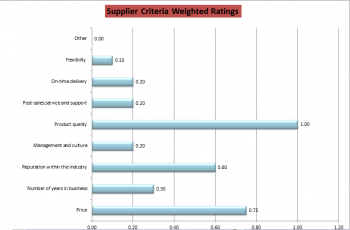Table of Contents
A root cause analysis template includes the steps that have taken to identify the problem and determine the cause. This document also explains the approach that will be used to address the problem. Basically, a root cause is something like hindrance in a way of your business success. You can say it as the underlying reason for the problem at hand.
Moreover, you should readily identify root cause when the problem occurs so that it can be easily handled by the management. Once this underlying problem has been repaired, there is very little chance of it returning. Root cause includes the following;
- Human or machine error
- Failure of materials
- Manufacturing issue
- Errors in procedure
- Failure in logistics
Root cause analysis is employed by the management in order to make sure that this recurring underlying nightmare of cause and effect is eliminated. After identifying the root cause, the management has to choose an RCA technique to get rid of it. There are different methods available to alleviate your situation that you may not know if you are new to RCA. These tools are designed to;
- to problem-solve
- to identify issues
- to support the process
How to perform a root cause analysis?
The main purpose of root cause analysis is to improve the quality of your products or services. It must be performed in a step-by-step fashion. It is extremely important to follow the proper hierarchy for each technique. In locating the primary problem, there are different techniques but the basic hierarchy remains the same;
- Identify the problem
- Collect as much data as you can and input as possible
- Locate the causes
- Find solutions
- Make actionable strategies for the modifications you seek
- Provide yourself enough time to see if the changes take hold
If you are new to performing a root cause analysis, you just write down the above steps. Then, try to work things out on paper first. This provides you an idea of what you are looking for. Furthermore, it assists you in selecting the proper technique to conduct your real root cause analysis.
Tips for performing root cause analysis:
Here is a basic outline that you should follow for performing RCA;
- While selecting team members, select those who are from the departments affected by the problem. Assign delegate duties to each member of team.
- Don’t feel hesitate to assemble data from customers and branch managers. If the members of team aren’t familiar with RCA process then you should hire an RCA consultant to lead the team.
- With milestones and within timeframes, you should keep up to date. Most RCA’s usually requires 2 months to complete. This may include assembling data, brainstorming sessions and collating data. You have to assure that deadlines are met. Also, make sure that meetings are scheduled regularly at a time when everyone on the team can meet.
- Here, patience and keen analysis are keys. On the basis of the scope of the issue, it may take as little as a day, or as long as several months for detecting a positive change.
Approaches and techniques for performing RCA:
Fishbone diagram:
This technique of RCA is used to develop cause and affect relationships between variables and it is also known as the Ishikawa diagram.
Tree Diagram:
When conducting a basic RCA, this method is one of the old stand-by methodologies that provide a neat, concise, visual diagram of your issues.
The 5 Whys:
This technique functions by asking questions and these 5 whys consist of (Define, Measure, Analyze, Improve, Control) methodology.
Conclusion:
In conclusion, a root cause analysis template helps you in looking at the underlying causes behind lags in production or customer complaints. This document is designed to break down complex processes into simpler ones. Successful businesses use this tool as a checkpoint regularly.



























